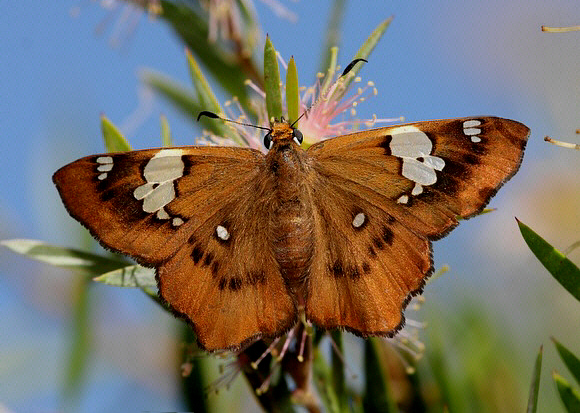
Introduction
The genus Netrocoryne comprises of two species – thaddeus from Papua New Guinea, and repanda from Australia. Both are large species that have brown wings with large hyaline windows. Netrocoryne repanda is found in Queensland, New South Wales, Canberra and Victoria.
Habitats
This species inhabits open woodland at elevations between about 100-1500m according to locality.
Lifecycle
The egg is orange with vertical ribbing. It is laid singly on a leaf of the foodplant, glued in position with a brown fluid. The caterpillar feeds on many trees and shrubs including Cinnamomum, Neolitsia and Endiandra ( Lauraceae ), Callicoma ( Cunoniaceae ), Podocarpus ( Podocarpaceae ), Alectryon ( Sapindaceae ), Notelaea ( Olacaceae ), Brachychiton ( Sterculiaceae ), Lophostemon and Acmena ( Myrtaceae ), Elaeocarpus ( Elaeocarpaceae ) and Scolopia ( Salicaceae ).
During the early instars it lives within a wonderfully constructed shelter which it makes by cutting a circular section from the middle of a leaf, leaving a tiny section connected, which it folds over like the lid of a tin can, and seals in position with threads of silk. When older it abandons the shelter and constructs a much simpler one, folding and silking an entire leaf.
The larva is pale greyish dorsally with dark olive green dorsal, subdorsal and lateral stripes. Below the spiracles it is yellow. The first and last segments are also yellow and carry a pair of black spots. Pupation takes place within the final leaf shelter. The pupa is white except for the thorax and wing cases which are dark brown.
Adult behaviour
Both sexes rest under leaves with their wings fully outspread when not feeding, and make periodic forays to feed at flowers or search for potential mates.
